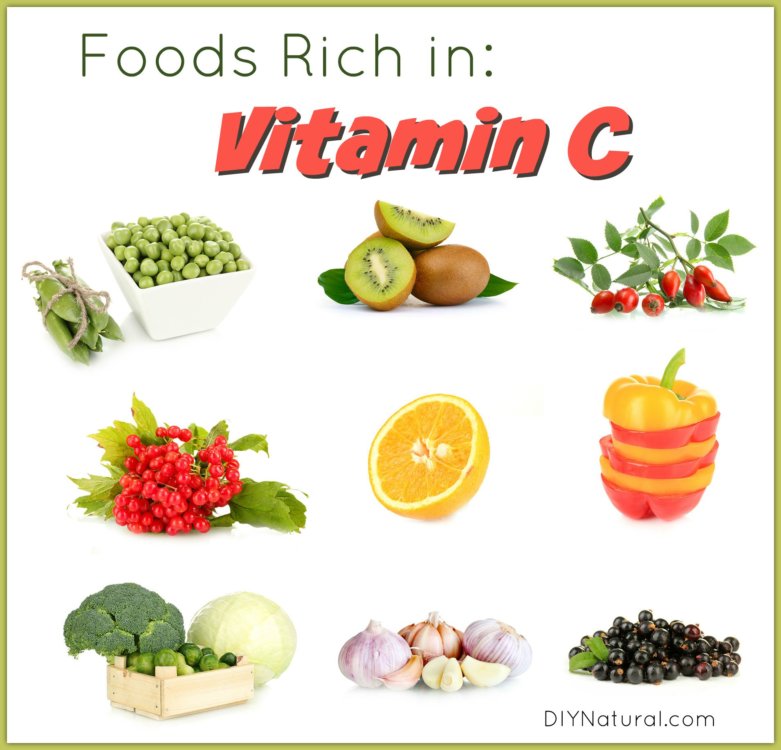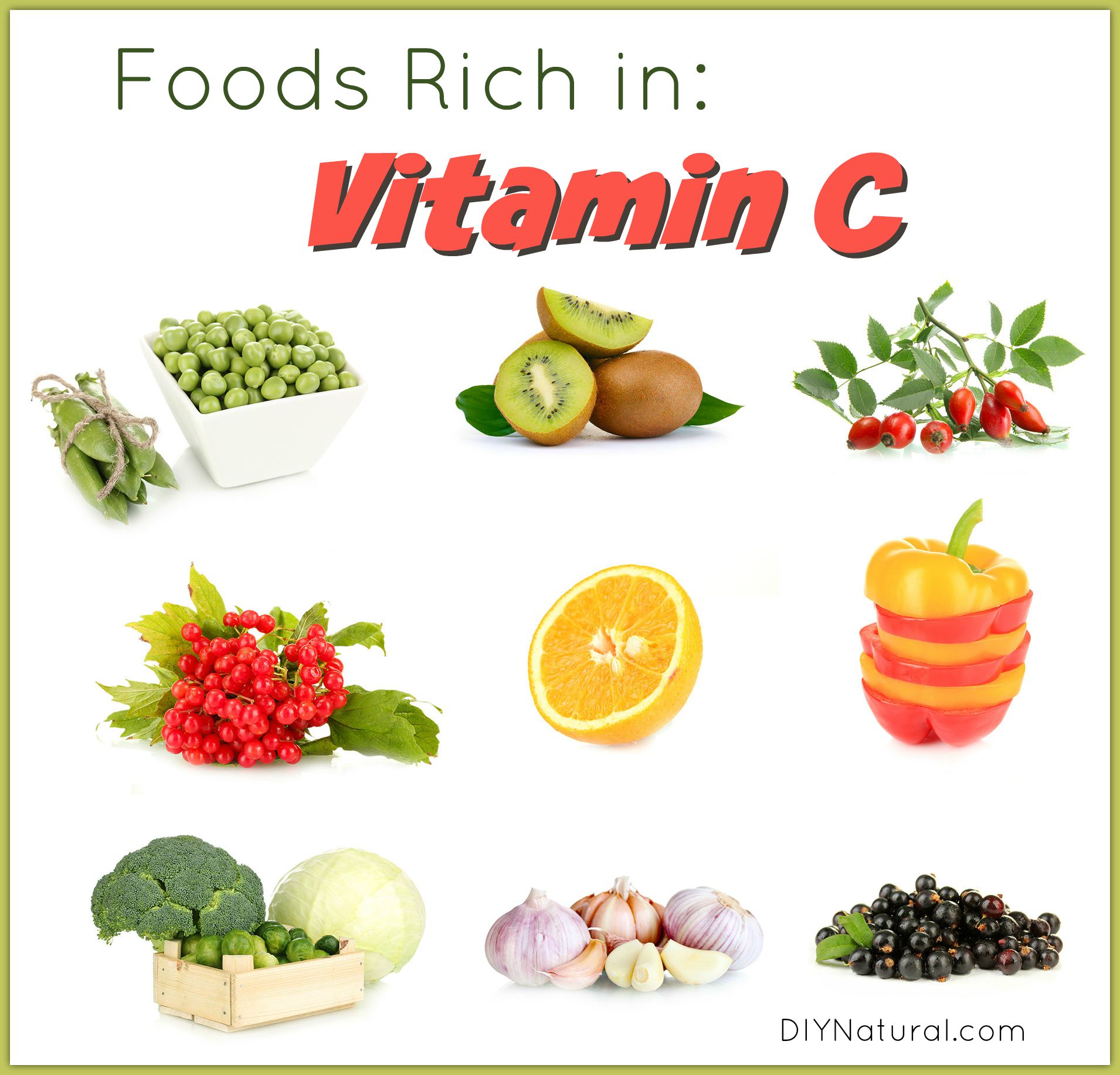
This list of Vitamin C foods will help you source vitamin C from food and real DIY supplementation, like our elderberry glycerite recipe.
Now that fall is almost upon us and quite a few of us are back in school, it seems like a lot of people are getting sick. I run a coffee shop at a small college and we see an average of 500 customers per day. We are located in a freshman dorm and every year, all these germs combine together to give us what is commonly called “The Freshman Crud.” It’s a respiratory ailment that seems to have no origins other than germs from all over. One way to combat it is to take lots of Vitamin C.
Food Is The Best Source
Let thy food be thy medicine and thy medicine be thy food.Hippocrates
Vitamin C is one of the antioxidants that keep us healthy and enhances the immune system, among other things. You can take Vitamin C supplements, but most are synthetic, so the body cannot assimilate them, and just flushes out through the urinary system. Foods with naturally occurring Vitamin C are much better for you. They have smaller doses and can be eaten or drunk frequently without the stomach upset that some Vitamin C supplements have.
Note from Matt & Betsy: While getting your vitamins from foods is best, there are times when a supplement really comes in handy. We like this whole food Vitamin C supplement made with camu camu and acerola cherry. It’s especially convenient to add to drinks at the first sign of sickness when you’re trying to load up on this vitamin.
Vitamin C Foods
We all know about citrus fruits containing Vitamin C. All of them: oranges, grapefruit, lemons, limes, and tangerines have a large amount. But what about other foods? Here is a list of surprising sources and the average amount for an average-size serving:
- Rosehips – 2000 mg per 100 grams
- Red Pepper – 190 mg per 100 grams
- Parsley – 130 mg per 100 grams
- Kiwi – 90 mg per 100 grams
- Guava – 188 mg per 100 grams
- Broccoli – 90 mg per ½ cup
- Black Currant – 200 mg per 100 grams
- Green Pepper – 70 mg per 100 grams
- Strawberries – 70 mg per ½ cup
- Brussels Sprouts – 70 mg per 100 grams
- Cantaloupe – 75 mg per 100 grams
- Chili Pepper – 244 mg per 100 grams
- Goji Berry – 73 mg per 100 grams
- Elderberry – 60 mg per 100 grams
- Papaya – 60 mg per ½ cup
- Cauliflower – 63 mg per ½ cup
- Calf liver – 48 mg per 8 ounces
- Oysters – 38 mg per 100 grams
- Kale – 123 mg per 100 grams
- Peas – 60 mg per 1 cup (and 48 mg in peapods!)
The next 5 vitamin C foods are fairly new and may be harder to find. Check your local health food store or co-op:
- Camu Camu – 2800 mg per 100 grams
- Kakadu Plum – 2500-5000 mg per 100 grams
- Acerola Cherry – 1677 mg per 100 grams
- Sea Buckthorn – 675 mg per 100 grams
- Amla – 445 mg per 100 grams
You can see by this list, which is by no means totally inclusive, that many of the foods you eat now are high in Vitamin C. Most are from plant sources, but some are from animal sources. The more obscure foods may be harder to find, but the reward is well worth the search.
How much Vitamin C is enough?
For an average size adult male, 90 mg is considered enough Vitamin C for a healthy body. For females, 70 mg is enough. How much is too much? It is hard to get too much Vitamin C, but 2000 mg per day is considered too much. If you are getting too much the symptoms are mostly gastrointestinal. If you think you have gotten too much Vitamin C, simply drink a glass or two of water. Do not go overboard on the water as this can be more dangerous than too much Vitamin C. Also remember, it’s harder to overdose on vitamin C foods than on supplements.
Vitamin C Elderberry Glycerite Recipe
When I feel like I may be getting sick, with a few sniffles or sneezes, I turn to my elderberry glycerite. It is easy to make and is safe for children. You can substitute honey for vegetable glycerin, but do not give it to children under a year old if using honey.
Ingredients
- 1 cup dried elderberries (find organic dried elderberries here)
- 1 – 1¼ cups liquid vegetable glycerin (find organic vegetable glycerin here)
Instructions
- Place dried elderberries in a glass pint jar. Cover with vegetable glycerin. You may need to add a bit more glycerin after the elderberries have soaked it up.
- Place the cover on the jar and shake.
- Leave in a sunny spot for 2-3 weeks, shaking daily. Outside is best, but a sunny window will do.
- When the liquid looks dark purple, strain with cheesecloth and transfer to a small dark glass bottle with a dropper. (Do not add water, as this will usually cause mold.) Store in a dark, cool place. Shelf life is about 1-2 years. Because elderberries make up this glycerite recipe, we consider it a vitamin C food.
To Use
Take 5 drops a day to keep colds away or 5 drops every few hours as soon as you feel you are getting sick. Elderberries have powerful antioxidants including Vitamin C and have helped me many times get over the “crud” faster.
Note: Elderberries should never be eaten raw. If you are harvesting fresh elderberries, which should be ripening about August in many parts of the country, they must be treated first. Cooking is the best way to treat them, but drying and freezing will work as well. Once treated, they can be used in herbal preparations.
Build your family’s immunity against illnesses for fall and winter.
Check out these other useful articles:
- How to Treat & Prevent Illness Naturally at Home
- Homemade Elderberry Syrup
- Homemade Fire Cider – A Natural Immunity Booster
*******




Pine needles also, you can make tea with a bit of honey or even eat them raw.
Thanks for the informative post. It’s good to know that I’m more than likely getting enough vitamin C in my diet as I eat many of these foods. Also, I’m wanting to know what the vegetable glycerine is in the elderberry recipe?
Could I use an oil other than glycerite? Olive oil?
I’ve never tried using elderberries this way. I just make a syrup with elderberries, honey, ginger and cinnamon. I use a medicine cup to take a tsp, full to ward off evil germs. If the evil germs attack me, I take a tblsp. of syrup 3 times a day.
Aren’t elderberries great, Sue? I love them. The syrup you make is really close to the glycerite and it looks like you use it much the same way.
thank you for valuable information about Vitamin C. please supply us with similar details about sources for VitaninD3.
Thank you
Actually Zouhair, I’m working on a vitamin D3 article as we speak. Watch for it coming soon!
I live in Australia, so winter has just finished for us. Every morning I have a cup of hot water with lemon juice and honey. I haven’t had a cold or flu for years. Medicinal Manuka Honey is particularly beneficial. I don’t know if you can get Manuka honey in the states, but it is amazing stuff. My 80yo old mother had a chest infection. 3 lots of ant-biotics wouldn’t shift it. 3 days of Manuka honey and lemon juice in hot water, 3 times a day, and within 3 days it was gone. Cheers Merrilyn
Manuka honey is the bomb, Merrilyn! Unfortunately it is hard to get here and is very expensive. But then who can put a price on our health? I think everyone who can should give it a try.
Hello! I just made goat milk soap with your beginner recipe with lye. Was fun and came out a nice buttery color. I used lard for my other oil and lemongrass for scent. It has been 24 hours since it was poured and it is still alittle on the soft side. Is this normal or did I do something wrong. Help!
It may be normal for your soap to be soft for the first few days, Renise, but it should harden up after a week or so. If it doesn’t, there was probably a miscalculation somewhere. With this small of a recipe, even a small difference in measurement could make a batch soft or brittle. Let me know how it goes!
If it doesn’t harden, put it in the blender with some water and make liquid soap out of it. I save my pump bottles for this and it works quite well.